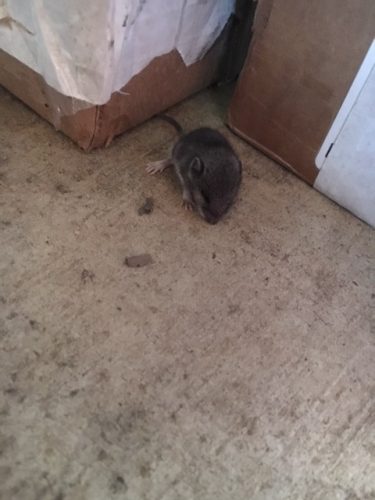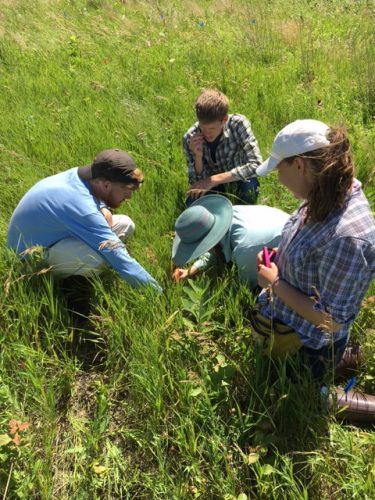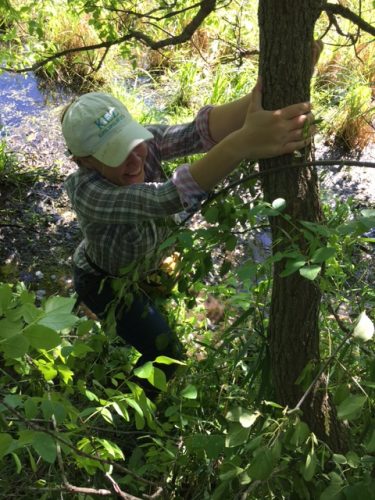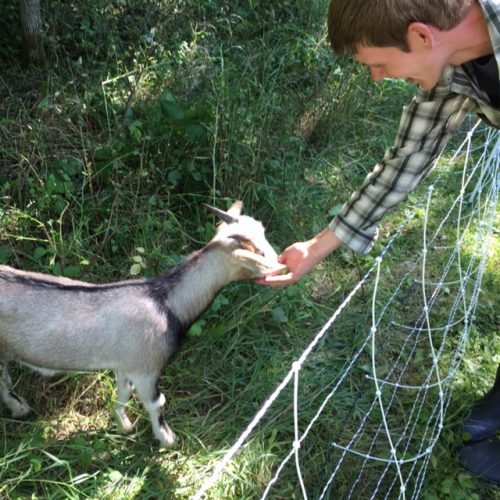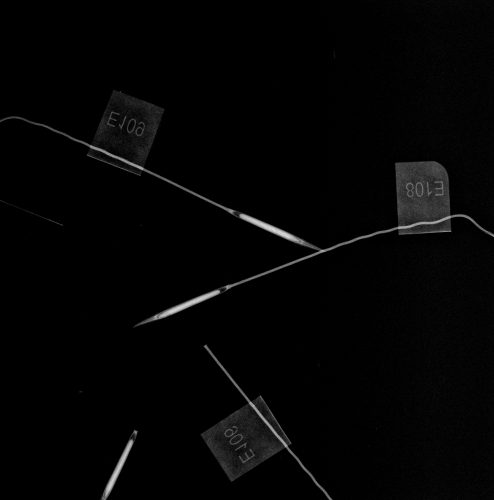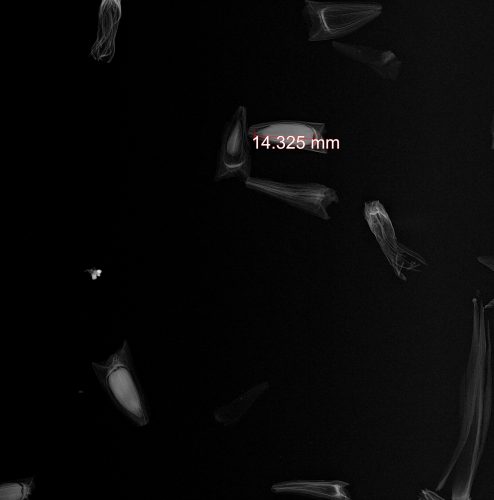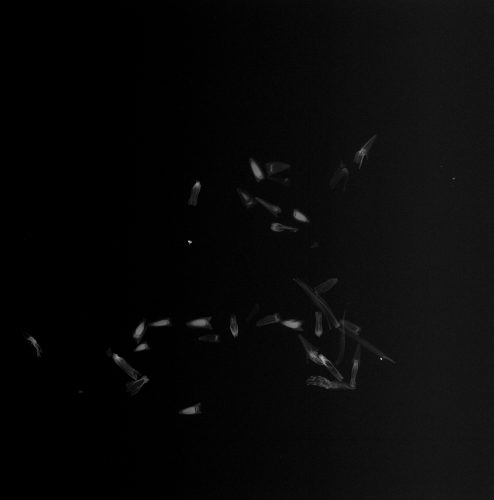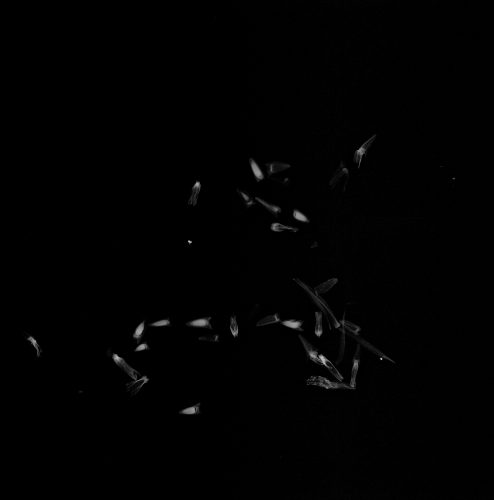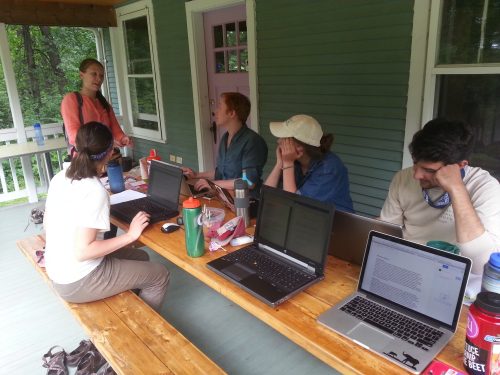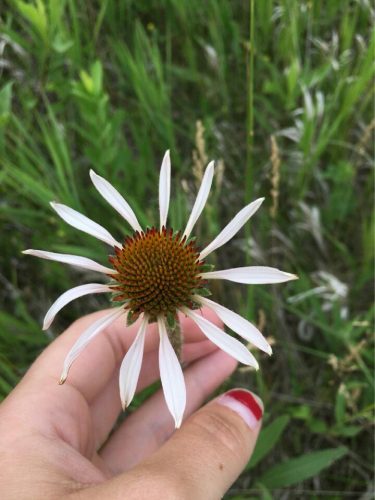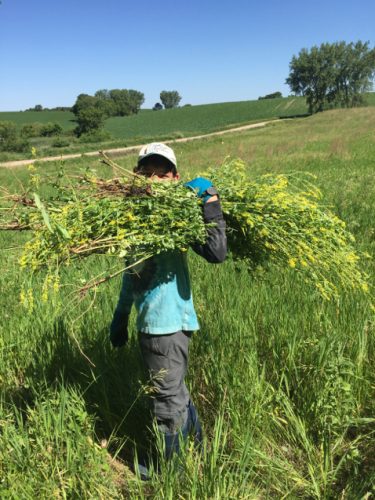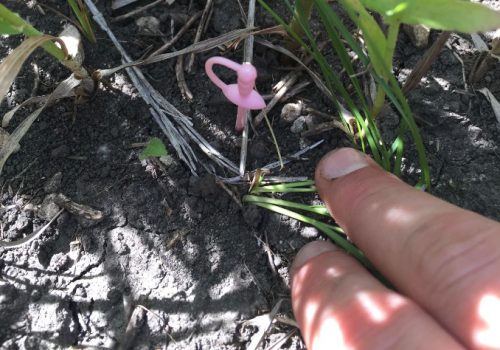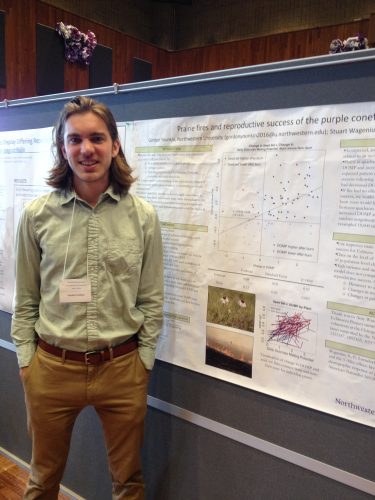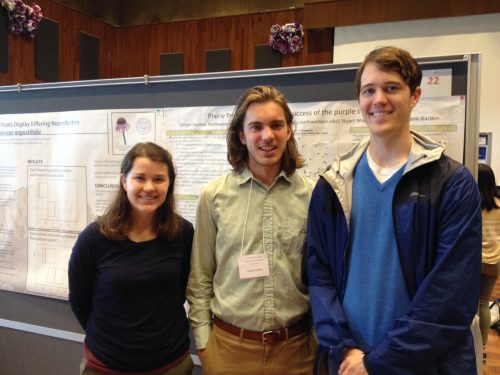|
|
Today was probably the coldest day of fieldwork we have had all summer, a cold front passed through on Wednesday and left us with a cloudy 60 degree day. For those team members who are more accustomed to hotter summers today was a little bit of a shock.
We went out to do total demography at Staffanson Praire Preserve, our goal while doing total demo is to census all of the plants that have flowered sometime in the last 20 years. It’s a big project, at Staffanson alone there are just over one thousand locations to visit. While not all of these locations still have a plant it is awesome to see a tag around a plant that was put there in 1996 or 1997.
 Even the flowers are cold! We made a huge dent in the number of locations at Staffanson, of the 1054 locations we visited 435, nearly half done!
 Scott stakes locations while Amy does demography on the plants at each location
I am excited to present to you my summer 2016 research proposal. While previous research has shown that isolated Echinacea plants and populations experience reduced reproductive fitness, we have not looked at what influence edge effects may have on Echinacea populations. Findings presented in Ison and Wagenius 2014 showed that plants in P1 experienced slight edge effects on seed set. My research this summer will use style persistence data collected from all remnant sites and quantify the relationship between distance of an Echinacea plant from a habitat edge and average style persistence. This will help us understand if fragmented populations are being harmed by yet another factor. Hopefully you find this topic as interesting as I do.
JamesEckhardtProposal2016
Here is a proposal for a fun project. It involves using demography data from this (and prior) years to estimate the growth rates of each of the remnants individually. Actually, that’s basically the whole project. Action items for the next month include: reading technical manuals with specifics on implementing aster models (see the list of project publications if you want to read them for me on your own).
scott_proposal_1
In other Scott-research related news, I will also try modeling fitness of various Hesperostipa spartea crosses in experimental plot 1. Just today I got a list of positions of plants found alive in 2016 — my plan in the near future is to search positions in the plot where plants were found alive in 2011 but weren’t found in 2016 to assess mortality. Keep your eyes open for another action-packed research proposal for this porcupine grass-ey project.
We met a half hour early today so we could do pollinator observations during what we thought would be their peak time. We were wrong. Hardly any bees were out and about on this very windy morning. Everyone finished around 10:30 and we met down in P1 to weed the birdsfoot trefoil.
 This little mouse greeted us in G3 this morning. The lunch table was very crowded today as we had a number of special visitors. Ruth Shaw, Dan (a grad student from U of M), and Amy and Brad Dykstra all came to help out. They also brought yummy chocolates and muffins for a lunch treat.
After lunch, everyone set out different ways. Some people went GPSing and some went to catch pollinators. I got to stay back to teach Lea, Scott, Alyson, and James my special talent, aphid exclusion and addition. Last summer, I worked a lot on the aphid project so it was a lot of fun to do again! Alyson even sang to the aphids to sooth them into their new homes. Roxy saw how much fun we were having and decided to join us for awhile in P1. We found 70/100 original addition/exclusion plants, including 33/50 addition and 37/50 exclusion ones.
 Here’s some aphids I found on a collection plant in P1.  Team members learning the ways of aphids. Today I also took my first trip to the infamous bog with Alyson and James! Roxy, the bog dog, took me on a wonderful tour of the place. On our way up, we stopped to pet the goats.
 Alyson trying to escape the treacherous bog waters.  Scape Goat eats out of James’s hand.
While looking for some information about the establishment of the Stipa experiment, I encountered an x-ray image of a few Stipa propagules (Hesperostipa spartea). Check it out…
 An x-ray image of a Stipa propagule (Hesperostipa spartea)
I also found some x-ray images of Echinacea angustifolia achenes. There are higher resolution images than the ones we now take for data analysis.
 An x-ray image of achenes & other stuff from an Echinacea angustifolia head with higher magnification
 An x-ray image of achenes & other stuff from an Echinacea angustifolia head  An x-ray image of achenes & other stuff from an Echinacea angustifolia head
Today was another great day on Team Echinacea. This morning we continued our work on Q2, and we continued to make significant progress. We measured many plants and found at least five new plants in the experimental site. After a hearty lunch and a short time marveling at ice formations in a water bottle, Amy Dykstra gave a presentation on her research, which included her study of local adaptation of Echinacea. The afternoon was filled with preparations for IS projects (for the Wooster folks) and independent projects for the rest of us. Leah and Laura quickly became adept at catching pollinators, but were not so successful at transferring the collected pollen to fuchsin jelly. The rest of us hunkered down on our computers, read some literature, prepared project proposals and thought about how hard it would be to use NMR and IR to analyze pollen.
 Leah regales us with stories of captured pollinators and attempts at melting fuchsin jelly on a car dashboard. The exciting news of the day is that we found our first flowering Echinacea in P1 and at Elk Lake Road East! Tomorrow we will find out how many more Echinacea are flowering.
 The second flowering Echinacea (found at Elk Lake Road East)!
The gang had a busy day today, almost all of it in the warm June sun. Alyson continued setting up her experimental plots in the Staffanson bog, and spent the afternoon measuring canopy cover and soil pH for her IS project. Meanwhile, the rest of the team (minus Gretel, who was setting up work for q2 juvenile counts) picked up our fleg begs and counted Hesperostipa spartea and weeded in p1. Amy and James found one H. spartea specimen with 137 seeds! We are now up to 17 out of 59 rows surveyed. Meanwhile, Will, Alex and Per led the crew in weeding out the non-native yellow sweet clover (Melilotus) from the periphery of the plot area. Hopefully we eliminated a lot of potential seeds form the seed bank, meaning that in future years the rows will be devoid of this weedy legume and the study Echinacea will have less competition. Stuart also showed me what poison ivy looks like for the third time, and I still don’t think I could pick it out of a lineup.
 Per with a bundle of sweet clover picked from around p1. This is probably less than 10% of what was removed today. After some brief (or for Alex, who was cleaning the bathroom, not so brief) chores at the Hjelm House, the team returned to exPt8 (experimental plot 8) to search for juvenile Echinacea crosses planted in 2013. This meant more time bent over, although now instead of looking for seedlings we were looking for melted bits of toothpick (which were placed to mark seedlings). Some seedlings were in great shape — Alex and I found a couple with basal leaves over 10 cm tall. Others were not in great shape, either dead or missing like Jimmy Hoffa. We got about a third of the work for qGen2 this afternoon. It may rain tomorrow, so we’re bracing for indoors-work and hiding our bicycles inside.
 Using a pink sword to claim the new seedling (left) for Team Echinacea. We used cocktail swords to denote seedlings germinating this year from achenes sown in 2013.
We were curious about the average sizes of our various remnant populations so I did some quick calculations and created this csv. As you can see, landfill is quite large with a median of 315 individuals found per year, whereas sites like dog and mapp are tiny, with only 3 plants found per year. At dog, to the best of our knowledge, there are only 3 Echinacea to be found, so we have regularly gathered demographic info on all of them. It’s important to note that these numbers are preliminary, rough estimates. Sometimes we have to redo a site during the summer so there will be twice as many records (hence the right skewed means), most of the time we focus on only finding flowering plants, but in some years at certain sites (e.g. landfill in 2005 and 2007) we’ve attempted to find every single individual whether or not it was flowering. All that said, here are some histograms showing numbers of demography records at each site per year:
demoSizeGraphs
Gordon presented his poster, “Prairie fires and reproductive success of the purple coneflower” at the Northwestern Undergraduate Research and Arts Exposition. Here are some pictures from the event and his poster, which you can find here.
 
The Stipa Project — studying the effects of habitat fragmentation on the ecology and evolution of Stipa, a cool-season grass. In 2009 & 2010 we planted over 4,000 Stipa seeds in exPt 1. We’ve been put to the test trying to find our Stipa plants in a matrix of other grasses, but once they flower they are easy to spot. While we collected seed from Stipa in our common garden in 2014, our 2015 search for flowering Stipa plants was fruitless!
Read more about the Stipa experiment.
Read more about the natural history of Stipa.
Start year: 2009
Location: exPt1
|
|



